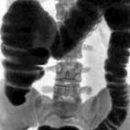«Great Mime» - so called celiac in foreign medical circles. That «nickname» This disease is obliged to a large variety of its manifestations and complications depending on the individual characteristics of the human body. About multiple symptoms and hazards of celiac disease you will learn from this article.
Content
Colecia and statistics
Celiac disease - a chronic disease characterized by damage to the mucous membrane of the small intestine gluten (more precisely by its component - glyadine) of vegetable protein, gluten, which is contained in cereals. These violations disappear with the full exception of the food gluten.
According to foreign authors who conducted population surveys, the frequency of celiac disease fluctuates from 1 case by 300 people in Sweden and Ireland to 1 case for 500 people in Israel. For example, in Sweden by 9 million. there are 28 thousand people. patients with celiac disease, in Finland by 5 million. - 10 thousand. Patients. The last international conference on celiac disease, held in Naples on April 19-24, 1999. determined the official frequency of patients with celiac disease in the world (in accordance with the screening survey 28 thousand. man) - 1 patient celiac at 184 people.
In Russia, celiac disease is considered one of the rare diseases. This point of view is due to the lack of diagnosis. The appearance of appropriate reagents 4 years ago in Moscow and St. Petersburg made it possible to reveal many patients with both classical and hidden (latent) form of this disease. In total, in St. Petersburg during the last year, the diagnosis «Tseliacia» It is a weekly 2-5 for the first time identified patients.
For active manifestation of celiac disease, a combination of three factors is required: heredity, the presence of gluten and starting mechanism (emotional stress, pregnancy, operation, viral infection,.). In foreign medical literature, celiac disease is called «Great Mime», Since its manifestations and complications are diverse, depending on the individual characteristics of the body.
The main symptoms of the disease: abdominal pain, diarrhea or persistent constipation, an increase in abdominal circumference, a change in appetite from its complete absence to a sharp increase, vomiting, lagging weight and growth rates, bone pain, spontaneous fractures, aggressive behavior, closure, apathy, depressed behavior, Conditions, skin itching, allergic lesions of the skin and organs of breathing, frequent viral diseases, anemia, nasal or other bleeding. From rare manifestations of celiac disease marked obesity.
With a long-term course of unrecognized celiac disease due to long-term intricacification of the body, heavy secondary immune disorders begin with gluten: insulin-dependent diabetes mellitus, CPR (mental delay), chronic hepatitis, arthritis in the type of rheumatoid, thyroiditis, insufficiency of adrenal glands, uveitis, stomatitis, intestinal ulcers, mouth tumors and gastrointestinal tract, chronic undifferentiated temperature conditions, infertility and gynecological diseases, epilepsy and schizophrenia. With a celiac disease, 78% increases the risk of cavity cavity, intestines and esophagus. The risk of these diseases is reduced after 5 years of strict gluten-free diet.
Clinical symptoms of celiac disease depending on the age of the following.
In children under the age of 2 years:
- diarrhea;
- flatulence;
- nausea and vomiting;
- insufficient weight gain;
- Insufficiency of the development of adipose tissue;
- anorexia;
- thinning of hair;
- psychomotor excitation;
- Causes.
In children after 2 years:
- diarrhea;
- anemia;
- reduced appetite;
- Low grow and weight;
- osteoporosis;
- Allergic manifestations (diathesis, allergic rash, pollinosis).
In adults:
-
 dyspepsia;
dyspepsia; - stomach ache;
- loss of body weight;
- Psycho-emotional disorders (anxiety, dipresia, etc.);
- Myopathy, neuropathy;
- secondary immunodificity states;
- anemia;
- Herpetyiform dermatitis;
- autoimmune diseases (type 1 diabetes mellitus, thyrotoxicosis, autoimmune hepatitis);
- rheumatoid arthritis;
- intestinal bleeding;
- lymphoma.
Risk groups for celiac disease:
- persons with chronic diarrhea or with periodic diarrhea and vomiting, diarrhea alternating with constipation;
- Persons with constant abdominal pains in combination with various dyspeptic disorders;
- Persons lagging in physical and / or sexual development;
- Persons with osteoporosis;
- patients with 1-type diabetes, autoimmune thyroiditis;
- persons with iron deficiency or megaloblastic anemia;
- Persons with chronic ulcerative stomatitis, herpetyiform dermatitis, furunculez and others. persistent lesions of the skin;
- Women with chronic pregnancy unbearable;
- Women with primary amenorrhea;
- Male infertility;
- Close relatives of patients with celiac disease.
Persons from risk groups need examination to eliminate celiac disease.









